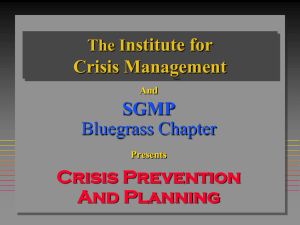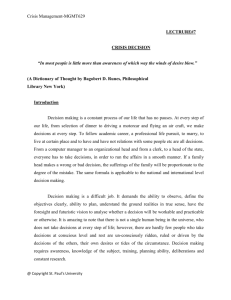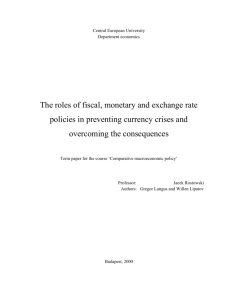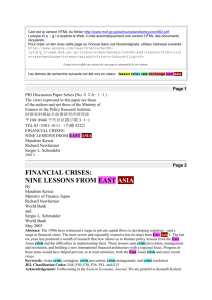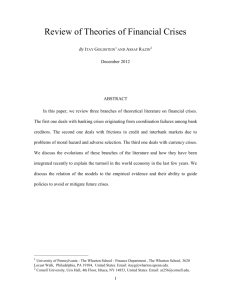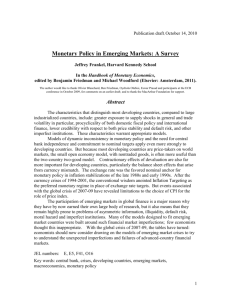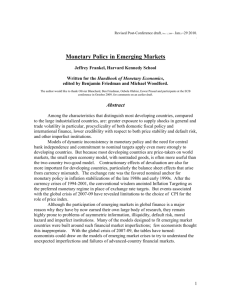Understanding Global Financial Crises
advertisement
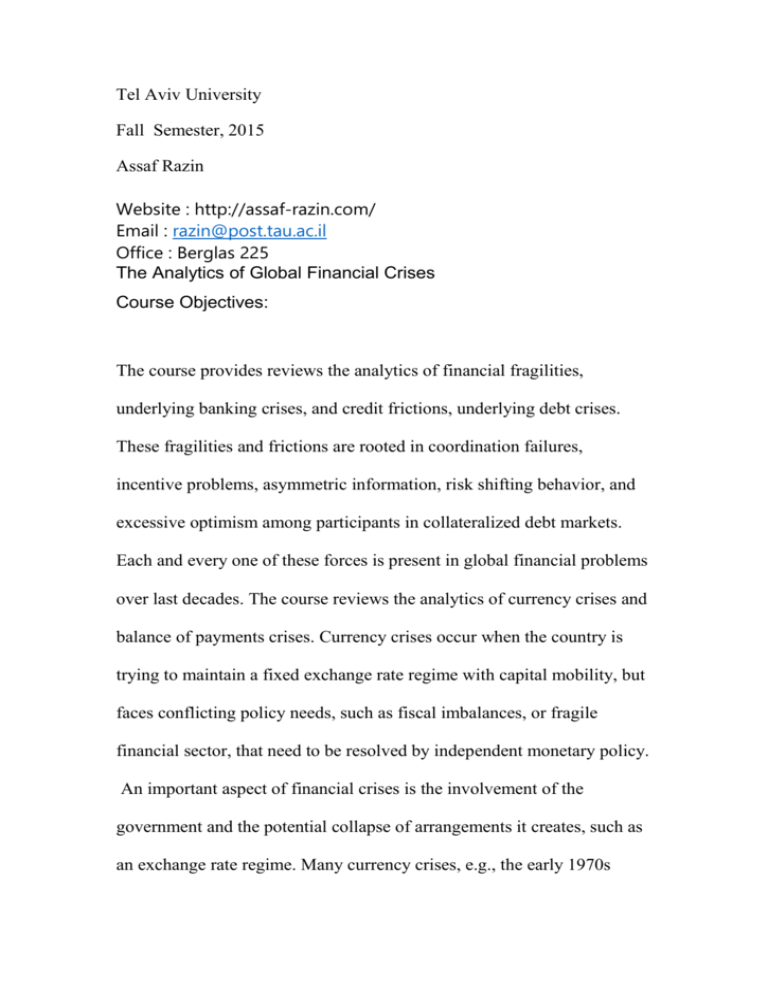
Tel Aviv University Fall Semester, 2015 Assaf Razin Website : http://assaf-razin.com/ Email : razin@post.tau.ac.il Office : Berglas 225 The Analytics of Global Financial Crises Course Objectives: The course provides reviews the analytics of financial fragilities, underlying banking crises, and credit frictions, underlying debt crises. These fragilities and frictions are rooted in coordination failures, incentive problems, asymmetric information, risk shifting behavior, and excessive optimism among participants in collateralized debt markets. Each and every one of these forces is present in global financial problems over last decades. The course reviews the analytics of currency crises and balance of payments crises. Currency crises occur when the country is trying to maintain a fixed exchange rate regime with capital mobility, but faces conflicting policy needs, such as fiscal imbalances, or fragile financial sector, that need to be resolved by independent monetary policy. An important aspect of financial crises is the involvement of the government and the potential collapse of arrangements it creates, such as an exchange rate regime. Many currency crises, e.g., the early 1970s breakdown of Bretton Woods global system, originate from the desire of governments to maintain a fixed exchange rate regime which is inconsistent with other policy goals. This might lead to the sudden collapse of the regime. Such models are highly relevant to the current situation in the European Monetary Union. In the basis of the theory of currency crises is the famous international-finance tri-lemma, according to which a country can choose only two of three policy goals: free international capital flows, monetary autonomy, and the stability of the exchange rate. Countries in the Euro zone now realize that in their attempt to achieve the first and third goal, they have given up on the second goal, and so have limited ability to absorb the shocks in economic activity and maintain their national debts, triggered by the global Coordination problems among investors and currency financial crisis. speculators aggravate this situation, and may have an important effect on whether individual countries in Europe are forced to default and/or leave the monetary union. The third-generation models of currency crises connect models of banking crises and credit frictions with traditional models of currency crises. Such models were motivated by the East Asian Crises of the late 1990s, where financial institutions and exchange rate regimes collapsed together, demonstrating the linkages between governments and financial institutions that can expose the system to further fragility. The last part of the course deals with key developments of New-Keynesian macroeconomic paradigm: from an analytical framework which features full capital-market arbitrage, smooth credit, Ricardian-equivalence properties, representative agent, and efficient monetary management, to the one, with multiple agents, incorporating debt frictions, liquidity trap, relatively ineffective monetary management, which gives a role for fiscal policy in aggregate demand management. The analytical framework based on the frictionless paradigm, captures well the role of globalization forces and the reduction in inflation in the 1990s Great Moderation era. The multiple-agent, market-friction revised analytical framework captures some key features of the Great Recession, in the aftermath of the 2008 global financial crisis. It gives insight about the macroeconomic effects of debt overhang on the economic activity and inflation, when the monetary policy rate reaches its lower bound. Syllabus (i) Historical Accounts of the 1990s Asian and the Japanese Crises, The 2008 Global Financial Crisis and the Euro Crisis. (ii) Fragilities of Financial Markets: Elements of the Theory a. Banking Sector Fragility b. Credit frictions c. Asset bubbles d. Currency Crises: (iii) New-Classical Open Economy Macroeconomics 1. Inflation and seigniorage 2. Exchange Rate (iv) The New Keynesian Model (v) New Macro-Finance Paradigm a. Deleveraging and liquidity trap b. Financial acceleration c. Credit frictions in a full-fledged stochastic dynamic general equilibrium model Readings: Jordi Galí Monetary Policy, Inflation, and the Business Cycle: An Introduction to the New Keynesian Framework, Princeton University Press, 2008. Chapters 1-5. Assaf Razin: Understanding Global Financial Crises, MIT Press, 2015.Chapters 1-6, and 9-12. Recommended: Michael Woodford Interest and Prices: Foundations of a Theory of Monetary Policy by ISBN : 9780691010496, chapter 1-3.



